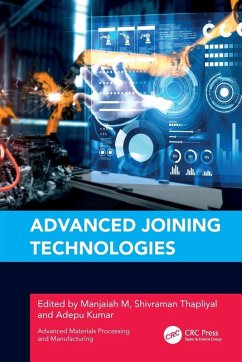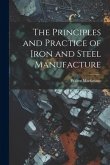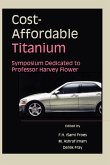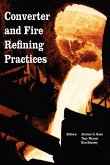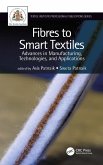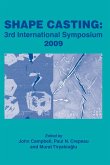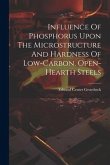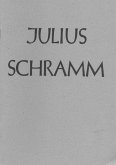Advanced Joining Technologies
Herausgeber: M, Manjaiah; Kumar, Adepu; Thapliyal, Shivraman
Advanced Joining Technologies
Herausgeber: M, Manjaiah; Kumar, Adepu; Thapliyal, Shivraman
- Broschiertes Buch
- Merkliste
- Auf die Merkliste
- Bewerten Bewerten
- Teilen
- Produkt teilen
- Produkterinnerung
- Produkterinnerung
This book covers advances in fusion and solid-state welding processes including basics, welding metallurgy, defect formation and effect of process parameters on mechanical properties. The microstructural and mechanical behaviour of the weldments are included alongwith challenges encountered during the process.
Andere Kunden interessierten sich auch für
![The Principles and Practice of Iron and Steel Manufacture The Principles and Practice of Iron and Steel Manufacture]() Walter MacfarlaneThe Principles and Practice of Iron and Steel Manufacture23,99 €
Walter MacfarlaneThe Principles and Practice of Iron and Steel Manufacture23,99 €![Cost-Affordable Titanium Cost-Affordable Titanium]() FroesCost-Affordable Titanium169,99 €
FroesCost-Affordable Titanium169,99 €![Converter and Fire Refining Practices Converter and Fire Refining Practices]() RossConverter and Fire Refining Practices207,99 €
RossConverter and Fire Refining Practices207,99 €![Fibres to Smart Textiles Fibres to Smart Textiles]() Fibres to Smart Textiles177,99 €
Fibres to Smart Textiles177,99 €![Shape Casting 3rd Symposium 2009 Shape Casting 3rd Symposium 2009]() CampbellShape Casting 3rd Symposium 2009114,99 €
CampbellShape Casting 3rd Symposium 2009114,99 €![Influence Of Phosphorus Upon The Microstructure And Hardness Of Low-carbon, Open-hearth Steels Influence Of Phosphorus Upon The Microstructure And Hardness Of Low-carbon, Open-hearth Steels]() Influence Of Phosphorus Upon The Microstructure And Hardness Of Low-carbon, Open-hearth Steels14,99 €
Influence Of Phosphorus Upon The Microstructure And Hardness Of Low-carbon, Open-hearth Steels14,99 €![Julius Schramm Julius Schramm]() Hugo KuekelhausJulius Schramm7,49 €
Hugo KuekelhausJulius Schramm7,49 €-
-
-
This book covers advances in fusion and solid-state welding processes including basics, welding metallurgy, defect formation and effect of process parameters on mechanical properties. The microstructural and mechanical behaviour of the weldments are included alongwith challenges encountered during the process.
Produktdetails
- Produktdetails
- Verlag: CRC Press
- Seitenzahl: 270
- Erscheinungstermin: 29. September 2025
- Englisch
- Abmessung: 234mm x 156mm x 15mm
- Gewicht: 415g
- ISBN-13: 9781032356372
- ISBN-10: 1032356375
- Artikelnr.: 75289632
- Herstellerkennzeichnung
- Libri GmbH
- Europaallee 1
- 36244 Bad Hersfeld
- gpsr@libri.de
- Verlag: CRC Press
- Seitenzahl: 270
- Erscheinungstermin: 29. September 2025
- Englisch
- Abmessung: 234mm x 156mm x 15mm
- Gewicht: 415g
- ISBN-13: 9781032356372
- ISBN-10: 1032356375
- Artikelnr.: 75289632
- Herstellerkennzeichnung
- Libri GmbH
- Europaallee 1
- 36244 Bad Hersfeld
- gpsr@libri.de
Manjaiah M. is an accomplished Assistant Professor in the Department of Mechanical Engineering at National Institute of Technology (NIT), Warangal. With a strong background in Mechanical Engineering, he holds a B.E degree and an M.Tech in Manufacturing from University B.D.T College of Engineering, Karnataka, as well as a Ph.D in Mechanical Engineering from National Institute of Technology Karnataka. Dr. Manjaiah has a wealth of experience and expertise in Welding & Additive Manufacturing, having completed 3.5 years of Postdoctoral Experience at the University of Johannesburg, South Africa, and Ecole Centrale de Nantes-CNRS lab, France. Before joining NIT Warangal, Dr. Manjaiah served as an Assistant Professor at Manipal Institute of Technology, Manipal Academy of Higher Education, where he supervised several M.Tech and B.Tech thesis. He has made significant contributions to the field of Additive Manufacturing and has published 38 highly reputed journal articles and 10 book chapters. Dr. Manjaiah is a sought-after speaker and has presented 15 papers in international conferences across the globe. He has also conducted over 10 training programs in Additive Manufacturing, sharing his expertise with professionals and students alike. His contribution to the field of Additive Manufacturing is further evident in his reference book "Additive Manufacturing: A Tool for Industrial Revolution 4.0.". His expertise and accomplishments make him a valuable member of the academic community at NIT Warangal and a leading authority in the field of Additive Manufacturing. Shivraman Thapliyal is currently working as an Assistant Professor in Department of Mechanical Engineering, National Institute of Technology Warangal, India. He received his undergraduate degree from College of Engineering, Roorkee. He completed his Master's and Doctorate from Indian Institute of Technology, Roorkee in the year 2012 and 2017 respectively. He works in areas of metal based additive manufacturing, welding metallurgy, surface engineering and AI/ML in welding and additive manufacturing. Most of his work has focussed on the establishment of a structure-property correlation of welded and processed surfaces keeping the view of industrial applications. Adepu Kumar is currently a full-time Professor in Department of Mechanical Engineering, National Institute of Technology Warangal, India. He earned his PhD degree from Osmania University, Hyderabad, India, in 2001. His impressive academic journey includes a collection of over 200 publications, including about 90 journal articles, 80 conference proceedings, and an Indian patent. His publications have been cited more than 4000 times (Google Scholar (2022), h-index = 38). He has also successfully completed two international projects and two national projects. His research interests include dynamic recrystallization, microstructure evolution, and the intricate mechanics of plastic deformation during solid state joining and processing of both similar and dissimilar metals. Additionally, his exploration extends to the domain of metal-based additive manufacturing of aluminium alloys.
Chapter 1. Underwater Explosive Welding of Tin and Nickel Plates and
characterization of their interfaces. 1.1 Introduction. 1.2. Principle of
underwater explosive welding. 1.3. Design considerations for
experimentation of underwater explosive welding. 1.4. Methodology adopted
to weld and characterize the metal plates. 1.5. Discussion on welded plates
and their characterization. 1.6. Conclusion. References. Chapter 2.
Advances in Gas Tungsten and Gas Metal Arc Welding - A concise Review. 2.1.
Introduction. 2.2. Advancements in Gas tungsten arc welding. 2.3.
Advancements in Gas Metal Arc Welding. 2.4. DPGMAW. 2.5. High frequency
pulsed gas metal arc welding. 2.6. Ultra high frequency pulse Metal-Inert
Gas Welding (UFP-MIG). 2.7. Double-electrode gas metal arc welding
(DE-GMAW). 2.8. Conclusion. References. Chapter 3. Welding of AISI 304
steel using TIG and Pulse TIG: Weld deposition and relative joint strength
comparisons. 3.1. Introduction. 3.2. Materials and Methods. 3.3. Results &
Discussion. 3.4. Conclusion. References. Chapter 4. Processing of
bimetallic steel - copper joint by beam welding. 4.1. Introduction. 4.2.
Laser beam Welding of SS-copper. 4.3. Electron beam welding of
steel-copper. 4.4. Conclusion. References. Chapter 5. Studies on Cold Metal
Transfer Welding of Aluminium 5083 Alloy to Pure Titanium. 5.1.
Introduction. 5.2 Experimental Methodology. 5.3. Results and Discussion.
5.4. Conclusion. References. Chapter 6. Diffusion bonding for dissimilar
metals and alloys. 6.1 Introduction. 6.2 Diffusion mechanisms. 6.3 Process
variables. 6.4 Challenges in joining dissimilar metals by diffusion
bonding. 6.5 Approaches used to improve the effectiveness in dissimilar
metal bonding. 6.6 Conclusion. References. Chapter 7. Friction stir welding
- a solution for dissimilar material joining. 7.1. Introduction. 7.2. Major
Parameters. 7.3. FSW of dissimilar materials. 7.4. Major issues. 7.5.
Future scope. 7.6. Summary. References. Chapter 8. Joining of metallic
materials using Microwave Hybrid Heating. 8.1. Introduction. 8.2.
Fundamentals of microwave theory. 8.3. Heating mechanisms in microwave
processing. 8.4. Modes of heating. Microwave Joining. 8.5 Microwave
Joining. 8.6. Recent advances in microwave processing of metallic
materials. 8.7. Summary. 8.8. Future scope of microwave processing.
References. Chapter 9. Hybrid Welding Technologies. 9.1. Introduction. 9.2.
Power source hybridisation. 9.3. Material hybridisation. 9.4. Summary.
References. Chapter 10. Clinching: A Deformation-Based Advanced Joining
Technique. 10.1 Introduction. 10.2 Variants of Clinching. 10.3.
Clinching-based hybrid joining. 10.4. Factors affecting clinched joint
formation. 10.5. Mechanical and Metallurgical Characteristics of Clinched
Joint. 10.6. Failure modes of clinched joint. 10.7. Numerical modeling of
the clinching technique. 10.8. Conclusion and Future Scope. References.
Chapter 11. Systematic Study of Digital Twins for Welding Processes. 11.1
Introduction. 11.2 Literature Review. 11.3 Digital Twin in Welding. 11.4
Conclusion. References. Chapter 12. Application of machine learning
techniques for Fault Detection in Friction Stir based Advanced Joining
Techniques. 12.1 Introduction. 12.2 Artificial Intelligence in FSW and FSP.
12.3 Fault detection approach in FSW or FSP using artificial intelligence.
12.4 Summary. References. Chapter 13. Friction Stir Welding Characteristics
of Dissimilar / Similar Ti-6Al-4V Based Alloy and Its Machine Learning
Techniques. 13.1 Introduction. 13.2 Friction Stir Welding. 13.3
Conventional Optimization Techniques. 13.4 Machine Learning. 13.5
Advantages of Machine Learning in FSW. 13.6 Conclusion. References.
characterization of their interfaces. 1.1 Introduction. 1.2. Principle of
underwater explosive welding. 1.3. Design considerations for
experimentation of underwater explosive welding. 1.4. Methodology adopted
to weld and characterize the metal plates. 1.5. Discussion on welded plates
and their characterization. 1.6. Conclusion. References. Chapter 2.
Advances in Gas Tungsten and Gas Metal Arc Welding - A concise Review. 2.1.
Introduction. 2.2. Advancements in Gas tungsten arc welding. 2.3.
Advancements in Gas Metal Arc Welding. 2.4. DPGMAW. 2.5. High frequency
pulsed gas metal arc welding. 2.6. Ultra high frequency pulse Metal-Inert
Gas Welding (UFP-MIG). 2.7. Double-electrode gas metal arc welding
(DE-GMAW). 2.8. Conclusion. References. Chapter 3. Welding of AISI 304
steel using TIG and Pulse TIG: Weld deposition and relative joint strength
comparisons. 3.1. Introduction. 3.2. Materials and Methods. 3.3. Results &
Discussion. 3.4. Conclusion. References. Chapter 4. Processing of
bimetallic steel - copper joint by beam welding. 4.1. Introduction. 4.2.
Laser beam Welding of SS-copper. 4.3. Electron beam welding of
steel-copper. 4.4. Conclusion. References. Chapter 5. Studies on Cold Metal
Transfer Welding of Aluminium 5083 Alloy to Pure Titanium. 5.1.
Introduction. 5.2 Experimental Methodology. 5.3. Results and Discussion.
5.4. Conclusion. References. Chapter 6. Diffusion bonding for dissimilar
metals and alloys. 6.1 Introduction. 6.2 Diffusion mechanisms. 6.3 Process
variables. 6.4 Challenges in joining dissimilar metals by diffusion
bonding. 6.5 Approaches used to improve the effectiveness in dissimilar
metal bonding. 6.6 Conclusion. References. Chapter 7. Friction stir welding
- a solution for dissimilar material joining. 7.1. Introduction. 7.2. Major
Parameters. 7.3. FSW of dissimilar materials. 7.4. Major issues. 7.5.
Future scope. 7.6. Summary. References. Chapter 8. Joining of metallic
materials using Microwave Hybrid Heating. 8.1. Introduction. 8.2.
Fundamentals of microwave theory. 8.3. Heating mechanisms in microwave
processing. 8.4. Modes of heating. Microwave Joining. 8.5 Microwave
Joining. 8.6. Recent advances in microwave processing of metallic
materials. 8.7. Summary. 8.8. Future scope of microwave processing.
References. Chapter 9. Hybrid Welding Technologies. 9.1. Introduction. 9.2.
Power source hybridisation. 9.3. Material hybridisation. 9.4. Summary.
References. Chapter 10. Clinching: A Deformation-Based Advanced Joining
Technique. 10.1 Introduction. 10.2 Variants of Clinching. 10.3.
Clinching-based hybrid joining. 10.4. Factors affecting clinched joint
formation. 10.5. Mechanical and Metallurgical Characteristics of Clinched
Joint. 10.6. Failure modes of clinched joint. 10.7. Numerical modeling of
the clinching technique. 10.8. Conclusion and Future Scope. References.
Chapter 11. Systematic Study of Digital Twins for Welding Processes. 11.1
Introduction. 11.2 Literature Review. 11.3 Digital Twin in Welding. 11.4
Conclusion. References. Chapter 12. Application of machine learning
techniques for Fault Detection in Friction Stir based Advanced Joining
Techniques. 12.1 Introduction. 12.2 Artificial Intelligence in FSW and FSP.
12.3 Fault detection approach in FSW or FSP using artificial intelligence.
12.4 Summary. References. Chapter 13. Friction Stir Welding Characteristics
of Dissimilar / Similar Ti-6Al-4V Based Alloy and Its Machine Learning
Techniques. 13.1 Introduction. 13.2 Friction Stir Welding. 13.3
Conventional Optimization Techniques. 13.4 Machine Learning. 13.5
Advantages of Machine Learning in FSW. 13.6 Conclusion. References.
Chapter 1. Underwater Explosive Welding of Tin and Nickel Plates and
characterization of their interfaces. 1.1 Introduction. 1.2. Principle of
underwater explosive welding. 1.3. Design considerations for
experimentation of underwater explosive welding. 1.4. Methodology adopted
to weld and characterize the metal plates. 1.5. Discussion on welded plates
and their characterization. 1.6. Conclusion. References. Chapter 2.
Advances in Gas Tungsten and Gas Metal Arc Welding - A concise Review. 2.1.
Introduction. 2.2. Advancements in Gas tungsten arc welding. 2.3.
Advancements in Gas Metal Arc Welding. 2.4. DPGMAW. 2.5. High frequency
pulsed gas metal arc welding. 2.6. Ultra high frequency pulse Metal-Inert
Gas Welding (UFP-MIG). 2.7. Double-electrode gas metal arc welding
(DE-GMAW). 2.8. Conclusion. References. Chapter 3. Welding of AISI 304
steel using TIG and Pulse TIG: Weld deposition and relative joint strength
comparisons. 3.1. Introduction. 3.2. Materials and Methods. 3.3. Results &
Discussion. 3.4. Conclusion. References. Chapter 4. Processing of
bimetallic steel - copper joint by beam welding. 4.1. Introduction. 4.2.
Laser beam Welding of SS-copper. 4.3. Electron beam welding of
steel-copper. 4.4. Conclusion. References. Chapter 5. Studies on Cold Metal
Transfer Welding of Aluminium 5083 Alloy to Pure Titanium. 5.1.
Introduction. 5.2 Experimental Methodology. 5.3. Results and Discussion.
5.4. Conclusion. References. Chapter 6. Diffusion bonding for dissimilar
metals and alloys. 6.1 Introduction. 6.2 Diffusion mechanisms. 6.3 Process
variables. 6.4 Challenges in joining dissimilar metals by diffusion
bonding. 6.5 Approaches used to improve the effectiveness in dissimilar
metal bonding. 6.6 Conclusion. References. Chapter 7. Friction stir welding
- a solution for dissimilar material joining. 7.1. Introduction. 7.2. Major
Parameters. 7.3. FSW of dissimilar materials. 7.4. Major issues. 7.5.
Future scope. 7.6. Summary. References. Chapter 8. Joining of metallic
materials using Microwave Hybrid Heating. 8.1. Introduction. 8.2.
Fundamentals of microwave theory. 8.3. Heating mechanisms in microwave
processing. 8.4. Modes of heating. Microwave Joining. 8.5 Microwave
Joining. 8.6. Recent advances in microwave processing of metallic
materials. 8.7. Summary. 8.8. Future scope of microwave processing.
References. Chapter 9. Hybrid Welding Technologies. 9.1. Introduction. 9.2.
Power source hybridisation. 9.3. Material hybridisation. 9.4. Summary.
References. Chapter 10. Clinching: A Deformation-Based Advanced Joining
Technique. 10.1 Introduction. 10.2 Variants of Clinching. 10.3.
Clinching-based hybrid joining. 10.4. Factors affecting clinched joint
formation. 10.5. Mechanical and Metallurgical Characteristics of Clinched
Joint. 10.6. Failure modes of clinched joint. 10.7. Numerical modeling of
the clinching technique. 10.8. Conclusion and Future Scope. References.
Chapter 11. Systematic Study of Digital Twins for Welding Processes. 11.1
Introduction. 11.2 Literature Review. 11.3 Digital Twin in Welding. 11.4
Conclusion. References. Chapter 12. Application of machine learning
techniques for Fault Detection in Friction Stir based Advanced Joining
Techniques. 12.1 Introduction. 12.2 Artificial Intelligence in FSW and FSP.
12.3 Fault detection approach in FSW or FSP using artificial intelligence.
12.4 Summary. References. Chapter 13. Friction Stir Welding Characteristics
of Dissimilar / Similar Ti-6Al-4V Based Alloy and Its Machine Learning
Techniques. 13.1 Introduction. 13.2 Friction Stir Welding. 13.3
Conventional Optimization Techniques. 13.4 Machine Learning. 13.5
Advantages of Machine Learning in FSW. 13.6 Conclusion. References.
characterization of their interfaces. 1.1 Introduction. 1.2. Principle of
underwater explosive welding. 1.3. Design considerations for
experimentation of underwater explosive welding. 1.4. Methodology adopted
to weld and characterize the metal plates. 1.5. Discussion on welded plates
and their characterization. 1.6. Conclusion. References. Chapter 2.
Advances in Gas Tungsten and Gas Metal Arc Welding - A concise Review. 2.1.
Introduction. 2.2. Advancements in Gas tungsten arc welding. 2.3.
Advancements in Gas Metal Arc Welding. 2.4. DPGMAW. 2.5. High frequency
pulsed gas metal arc welding. 2.6. Ultra high frequency pulse Metal-Inert
Gas Welding (UFP-MIG). 2.7. Double-electrode gas metal arc welding
(DE-GMAW). 2.8. Conclusion. References. Chapter 3. Welding of AISI 304
steel using TIG and Pulse TIG: Weld deposition and relative joint strength
comparisons. 3.1. Introduction. 3.2. Materials and Methods. 3.3. Results &
Discussion. 3.4. Conclusion. References. Chapter 4. Processing of
bimetallic steel - copper joint by beam welding. 4.1. Introduction. 4.2.
Laser beam Welding of SS-copper. 4.3. Electron beam welding of
steel-copper. 4.4. Conclusion. References. Chapter 5. Studies on Cold Metal
Transfer Welding of Aluminium 5083 Alloy to Pure Titanium. 5.1.
Introduction. 5.2 Experimental Methodology. 5.3. Results and Discussion.
5.4. Conclusion. References. Chapter 6. Diffusion bonding for dissimilar
metals and alloys. 6.1 Introduction. 6.2 Diffusion mechanisms. 6.3 Process
variables. 6.4 Challenges in joining dissimilar metals by diffusion
bonding. 6.5 Approaches used to improve the effectiveness in dissimilar
metal bonding. 6.6 Conclusion. References. Chapter 7. Friction stir welding
- a solution for dissimilar material joining. 7.1. Introduction. 7.2. Major
Parameters. 7.3. FSW of dissimilar materials. 7.4. Major issues. 7.5.
Future scope. 7.6. Summary. References. Chapter 8. Joining of metallic
materials using Microwave Hybrid Heating. 8.1. Introduction. 8.2.
Fundamentals of microwave theory. 8.3. Heating mechanisms in microwave
processing. 8.4. Modes of heating. Microwave Joining. 8.5 Microwave
Joining. 8.6. Recent advances in microwave processing of metallic
materials. 8.7. Summary. 8.8. Future scope of microwave processing.
References. Chapter 9. Hybrid Welding Technologies. 9.1. Introduction. 9.2.
Power source hybridisation. 9.3. Material hybridisation. 9.4. Summary.
References. Chapter 10. Clinching: A Deformation-Based Advanced Joining
Technique. 10.1 Introduction. 10.2 Variants of Clinching. 10.3.
Clinching-based hybrid joining. 10.4. Factors affecting clinched joint
formation. 10.5. Mechanical and Metallurgical Characteristics of Clinched
Joint. 10.6. Failure modes of clinched joint. 10.7. Numerical modeling of
the clinching technique. 10.8. Conclusion and Future Scope. References.
Chapter 11. Systematic Study of Digital Twins for Welding Processes. 11.1
Introduction. 11.2 Literature Review. 11.3 Digital Twin in Welding. 11.4
Conclusion. References. Chapter 12. Application of machine learning
techniques for Fault Detection in Friction Stir based Advanced Joining
Techniques. 12.1 Introduction. 12.2 Artificial Intelligence in FSW and FSP.
12.3 Fault detection approach in FSW or FSP using artificial intelligence.
12.4 Summary. References. Chapter 13. Friction Stir Welding Characteristics
of Dissimilar / Similar Ti-6Al-4V Based Alloy and Its Machine Learning
Techniques. 13.1 Introduction. 13.2 Friction Stir Welding. 13.3
Conventional Optimization Techniques. 13.4 Machine Learning. 13.5
Advantages of Machine Learning in FSW. 13.6 Conclusion. References.

